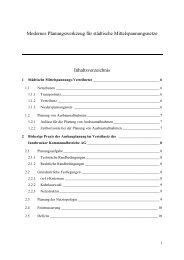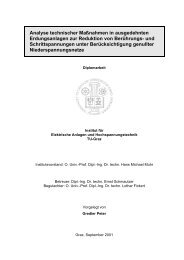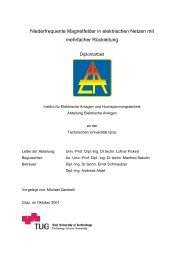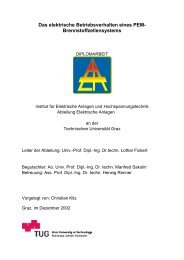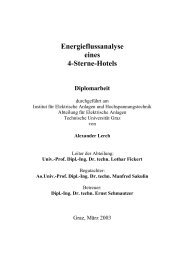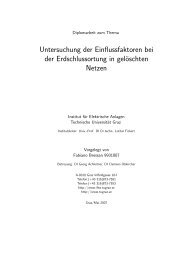Development of a wavelet-based algorithm to detect and determine ...
Development of a wavelet-based algorithm to detect and determine ...
Development of a wavelet-based algorithm to detect and determine ...
You also want an ePaper? Increase the reach of your titles
YUMPU automatically turns print PDFs into web optimized ePapers that Google loves.
6.2. BASIC IDEAS OF THE WAVELET TRANSFORM 36<br />
Suppose that a sequence {ϕn(t)} is a base for a space, <strong>and</strong> then any functions f(t) in<br />
the space can be represented with this base. Namely, there is Equation 6.1.<br />
f(t) = � Inϕn(t) n ∈ Z (6.1)<br />
Where In is a scalar sequence generated through the inner product <strong>of</strong> f(t) <strong>and</strong> ϕn(t), as<br />
shown in equation 6.2.<br />
{In} = 〈f(t), ϕn(t)〉 =<br />
Where ϕ ∗ n(t) is the complex conjugation <strong>of</strong> the function ϕn(t).<br />
�<br />
+∞<br />
−∞<br />
f(t)ϕ ∗ n(t)dt (6.2)<br />
Equations 6.1 <strong>and</strong> equation 6.2 form a pair <strong>of</strong> transforms. Equation 6.2 is called the (for-<br />
ward) transform or the decomposition because it breaks a function in<strong>to</strong> pieces through<br />
the base for the space. Equation 6.1 is called the inverse transform or the reconstruction<br />
because it puts the pieces back <strong>to</strong>gether <strong>to</strong> retrieve the original signal. It is clear that<br />
the property <strong>of</strong> a base is determinate for the transform.<br />
A transform theory always involves how <strong>to</strong> break a function apart (transform) <strong>and</strong><br />
then <strong>to</strong> put it back <strong>to</strong>gether (inverse transform). The reason for doing this is that sig-<br />
nificant insights, clear patterns, <strong>and</strong> efficiencies can be obtained through the operation<br />
on the pieces rather than the original function. Electrical engineers are familiar <strong>to</strong> many<br />
transforms: Fourier transform, Laplace transform, z transform, symmetric components<br />
transform <strong>and</strong> so on. These transforms all have own well working areas.<br />
The <strong>wavelet</strong> transform is nothing else but another transform. It represents signals<br />
through the space base that have the expected characteristics.<br />
Representation <strong>of</strong> signals through the <strong>wavelet</strong> transform<br />
Wavelets <strong>and</strong> the admissible condition: A <strong>wavelet</strong> belongs <strong>to</strong> one kind <strong>of</strong> functions<br />
which have the following characteristics:<br />
• The amplitude quickly decays <strong>to</strong> zero in both directions.




